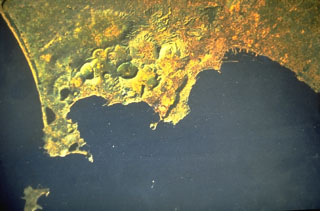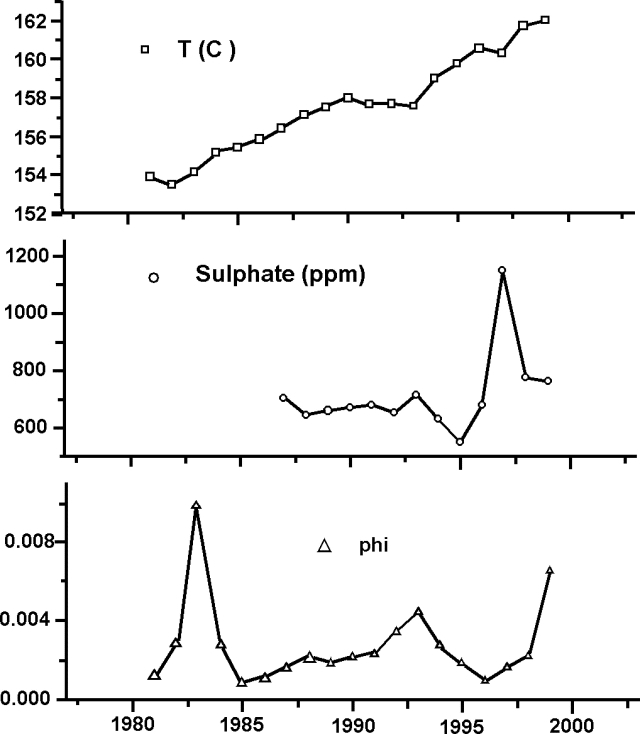Report on Campi Flegrei (Italy) — October 1999
Bulletin of the Global Volcanism Network, vol. 24, no. 10 (October 1999)
Managing Editor: Richard Wunderman.
Campi Flegrei (Italy) Variable sulfate concentration; rising temperatures and other increases
Please cite this report as:
Global Volcanism Program, 1999. Report on Campi Flegrei (Italy) (Wunderman, R., ed.). Bulletin of the Global Volcanism Network, 24:10. Smithsonian Institution. https://doi.org/10.5479/si.GVP.BGVN199910-211010
Campi Flegrei
Italy
40.827°N, 14.139°E; summit elev. 458 m
All times are local (unless otherwise noted)
Regular geochemical surveys of Campi Flegrei's fumarolic gases, crater lakes, and thermal springs (figure 21) have led to the following conclusions. First, the temperature of Bocca Grande continued the increase noted in 1997. Second, the sulfate concentration increase noted in 1997 for crater lakes and thermal springs was a "transitory event" caused by the unstable underlying geothermal system. Third, there have been shifts in the f (phi) function, an empirical relationship related to fumarolic gas chemistry (Martini, 1996). The f function acted as an empirical indicator of ground upheaval during the events of 1982-85. Since 1996 the f function has steadily increased to levels not observed since 1982-85 (figure 21).
Reference. Martini, M., 1996, Chemical character of the gaseous phase in different stages of volcanism: precursors and volcanic activity, in Scarpa and Tilling (eds.) Monitoring and mitigation of volcano hazards: Springer, Berlin, p. 199-219.
Geological Summary. Campi Flegrei is a 13-km-wide caldera that encompasses part of Naples and extends to the south beneath the Gulf of Pozzuoli. Episodes of significant uplift and subsidence within the dominantly trachytic caldera have occurred since Roman times. The earliest known eruptive products are dated 47,000 years BP. The caldera formed following two large explosive eruptions, the massive Campanian ignimbrite about 36,000 BP, and the over 40 km3 Neapolitan Yellow Tuff (NYT) about 15,000 BP. Following eruption of the NYT a large number of eruptions originated from widely scattered subaerial and submarine vents. Most activity occurred during three intervals: 15,000-9,500, 8,600-8,200, and 4,800-3,800 BP. The latest eruption were in 1158 CE at Solfatara and activity in 1538 CE that formed the Monte Nuovo cinder cone.
Information Contacts: Marino Martini, Dipartimento di Scienze della Terra, Università di Firenze, Via La Pira 4, 50125, Firenze, Italy.


